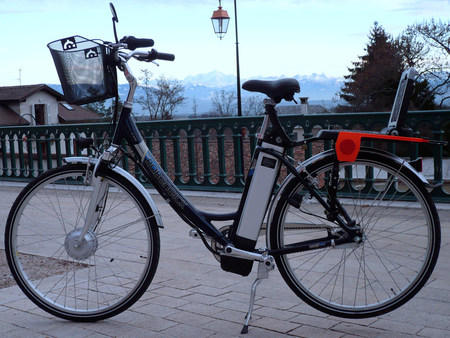I side with fishingpaul on this Mr Ching, and I think you miss the point of why so many of us like the Panasonic system.
Time after time, people have posted in here that they enjoy cycling and just want a bit of help on hills etc, but not high power and weight. They want a bike that still rides like the ordinary bike they've always enjoyed.
As good as your bikes are, they just don't do that. Like all hub motor bikes, they either operate like motor vehicles on a throttle, while accompanied by pedalling, or they operate on a pedelec system that is vastly inferior to the Panasonic one, supplying power in a fashion that isn't well related to the cycling effort.
Each type of bike has it's own value for different likes and uses, but you make a big mistake in repeatedly inferring that those of us who like the Panasonic system must be stupid or ignorant.
We're not. We are well aware of the system's power input, we've ridden them for years after all, more than you've done. We just enjoy true cycling like all cycling enthusiasts, and like the way in which the Panasonic system doubles the power of each pedal stroke while remaining true to pure cycling, not in any way a motor vehicle.
On the newest units, the fact that there is now a switchable higher power mode which, despite your protestations, gives a very real boost to the power provided on each pedal stroke, is now an added benefit while still retaining the same cycling quality.
In addition, as you've conceded in part, there's the little matter of quality and reliability, the Panasonic powered bikes being the most dependable and reliable of any e-bikes in any road and weather conditions.
And as if all this is not enough, the central power unit and battery makes the bike far better balanced and gives the considerable benefit of normal cycle wheels with correspondingly easy puncture repairs and tube and tyre replacements.
Of course the extra range comes from our cycling input, that's the whole point, a bicycle that's efficient enough to use our cycling input more effectively than hub motor bikes do. It's got nothing to do with us imagining power, and for you to say so is insulting.
Instead of this recent regular attack on the competition which does you no credit, surely it would be better if you concentrated on further improvements in your own bikes to match at least some of the qualities I speak of? We would all really welcome that.
.
Time after time, people have posted in here that they enjoy cycling and just want a bit of help on hills etc, but not high power and weight. They want a bike that still rides like the ordinary bike they've always enjoyed.
As good as your bikes are, they just don't do that. Like all hub motor bikes, they either operate like motor vehicles on a throttle, while accompanied by pedalling, or they operate on a pedelec system that is vastly inferior to the Panasonic one, supplying power in a fashion that isn't well related to the cycling effort.
Each type of bike has it's own value for different likes and uses, but you make a big mistake in repeatedly inferring that those of us who like the Panasonic system must be stupid or ignorant.
We're not. We are well aware of the system's power input, we've ridden them for years after all, more than you've done. We just enjoy true cycling like all cycling enthusiasts, and like the way in which the Panasonic system doubles the power of each pedal stroke while remaining true to pure cycling, not in any way a motor vehicle.
On the newest units, the fact that there is now a switchable higher power mode which, despite your protestations, gives a very real boost to the power provided on each pedal stroke, is now an added benefit while still retaining the same cycling quality.
In addition, as you've conceded in part, there's the little matter of quality and reliability, the Panasonic powered bikes being the most dependable and reliable of any e-bikes in any road and weather conditions.
And as if all this is not enough, the central power unit and battery makes the bike far better balanced and gives the considerable benefit of normal cycle wheels with correspondingly easy puncture repairs and tube and tyre replacements.
Of course the extra range comes from our cycling input, that's the whole point, a bicycle that's efficient enough to use our cycling input more effectively than hub motor bikes do. It's got nothing to do with us imagining power, and for you to say so is insulting.
Instead of this recent regular attack on the competition which does you no credit, surely it would be better if you concentrated on further improvements in your own bikes to match at least some of the qualities I speak of? We would all really welcome that.
.
Last edited:









